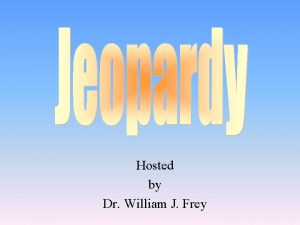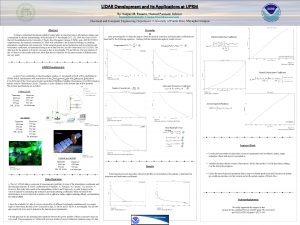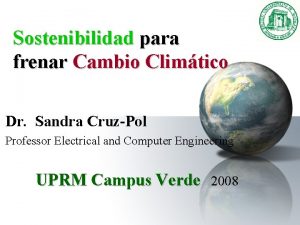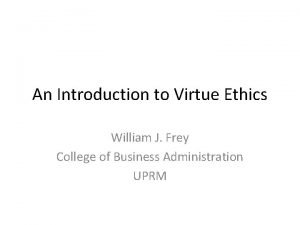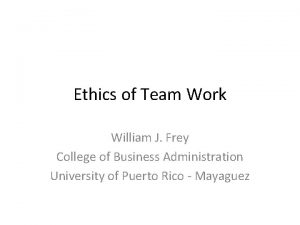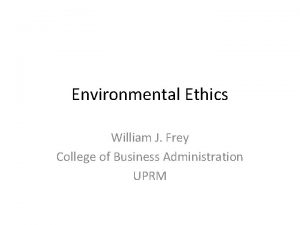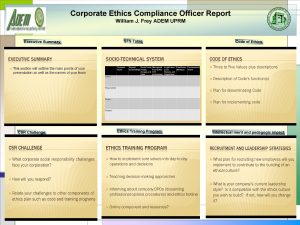Ethics Tests William J Frey UPRM Jos A











- Slides: 11

Ethics Tests William J. Frey (UPRM) José A. Cruz-Cruz (UPRM) Chuck Huff (St. Olaf)

Some issues • Does Jorge have a duty to tell the truth during the interview? • Should Jorge do whatever he can to avoid harming Carmen? • If Jorge lied about his pacifism, how would his fellow pacifists view this action? • Does Jorge have a right to assert his conscience? • Does Jorge’s duties/responsibilities to his family outweigh his pacifism? • Maybe it’s OK to tell a small lie if it avoids greater harms

Reversibility • “Would I still think the choice of this option good if I were one of those adversely affected by it? stakeholders? ” (Davis) • Agent projects into standpoint of those targeted by the action and views it through their eyes. (Your brain into their brains and back again) • Avoid extremes of too little and too much identification with stakeholder – go beyond your egocentric standpoint and make contact – but don’t get lost in the perspective of the other – Empathic and Advisory Projections

Harm • “Does this option do less harm than the available alternatives? ” (Davis) • Consider… – magnitude and range – distribution – Avoid too much (trying to factor in all harms no matter how trivial )and too little (leaving out significant harms)

Publicity Test • “would I want my choice of this potion published in the newspaper? ” (Davis) • You are working at the office. Your supervisor passes by. You minimize the window where you are chatting with a friend and open the report due Friday • What would Jorge’s pacifist friends think of his accepting the interview with Mega Weapons?

Test your solutions for their ethical and practical implications • Make a solution evaluation matrix to compare and rank solutions • Test the ethical implications of each solution • Carry out a global feasibility assessment of the solution. – What are the situational constraints? – Will these constraints block implementation?

Making a table • List your tests across the top • List your alternatives in the left column – Compare three, two strong ones and one weak one • In each cell provide an overall assessment of the strength of the solution under the given test – Give it a letter grade; assign it a number grade; give it a pass or fail assessment; list the deciding factor

Solution Evaluation Matrix Alternative / Test Alternative 1 Alternative 2 Alternative 3 Reversibility (or rights) Harm Publicity (Or values, or virtues) Will it Work? (Feasibility)

A Feasibility Test—Will it Work? • Restate your global feasibility analysis • Are there resource constraints? – Are these fixed or negotiable? • Are there technical or manufacturing constraints? – Are these fixed or negotiable? • Are there interest constraints? – Are these fixed or negotiable?

Meta-tests • If the tests you use converge on a solution, that is independent evidence of that solution’s strength. • If the tests diverge on a given solution (one ranks it high, another low) then that is overall evidence of the weakness of the solution • The tests are always relevant

Some Readings • Anthony Weston. (2002). A Practical Companion to Ethics: Second Edition. Oxford, UK: Oxford University Press. – Weston has several excellent suggestions for brainstorming solutions to ethical problems. He also discusses how to avoid the dilemma trap. • Michael Pritchard. (1996). Reasonable Chldren: moral education and moral learning. Lawrence, KS: University of Kansas Press. • Carolyn Whitbeck. (1998). Ethics in engineering practice and research. Cambridge, UK: Cambridge University Press. – Whitbeck provides an illuminating discussion of the analogy between ethics and design problems. • Michael Davis. (2011). “The Usefulness of Moral Theory in Teaching Practical Ethics: A Reply to Gert and Harris. ” Teaching Ethics, Fall 2011. • William Frey. (2007). “Commentary on Kelly’s Cosmetic Surgery: Integrating Values Through Three Ethics Tests. ” Teaching Ethics, Spring 2007.

